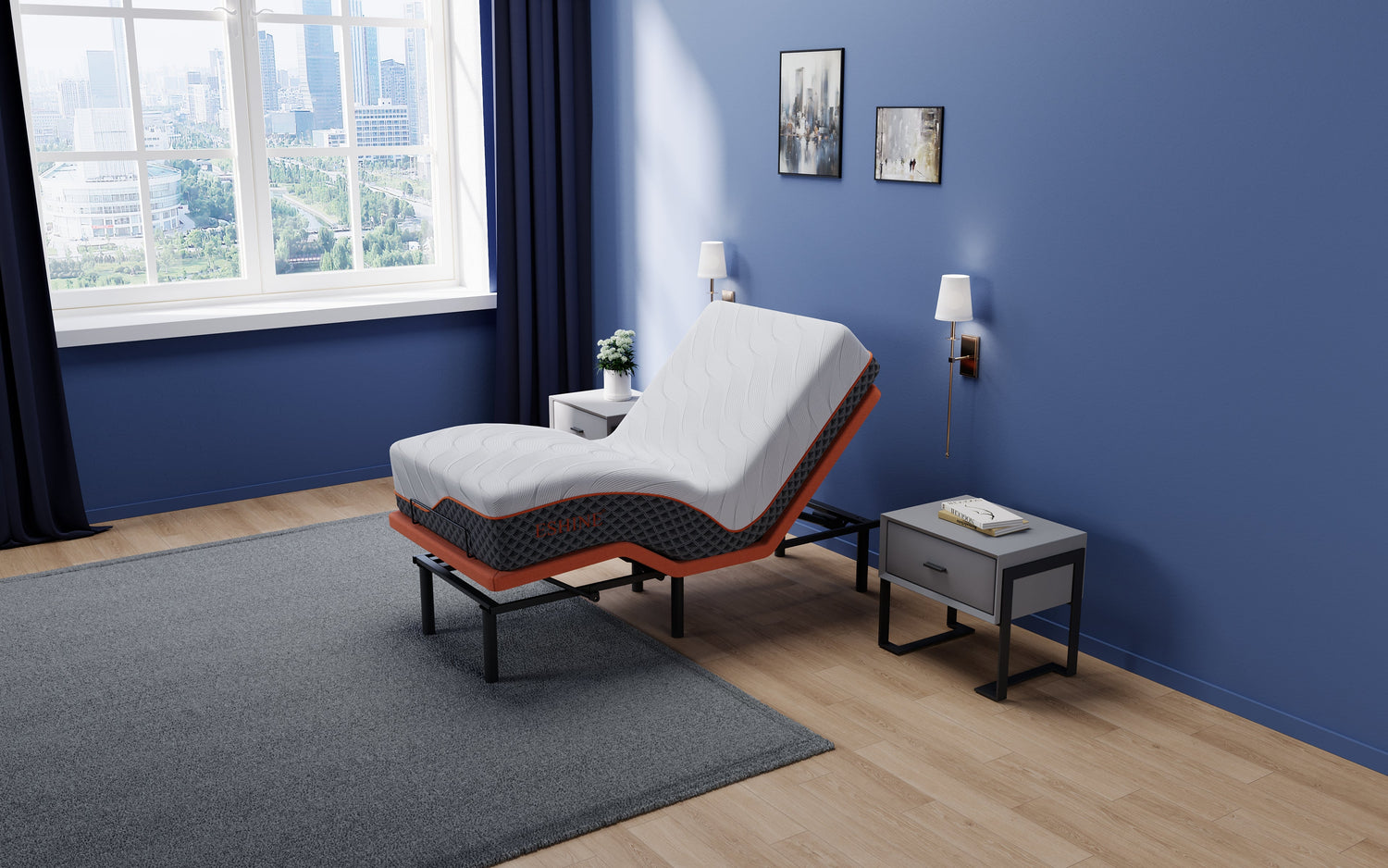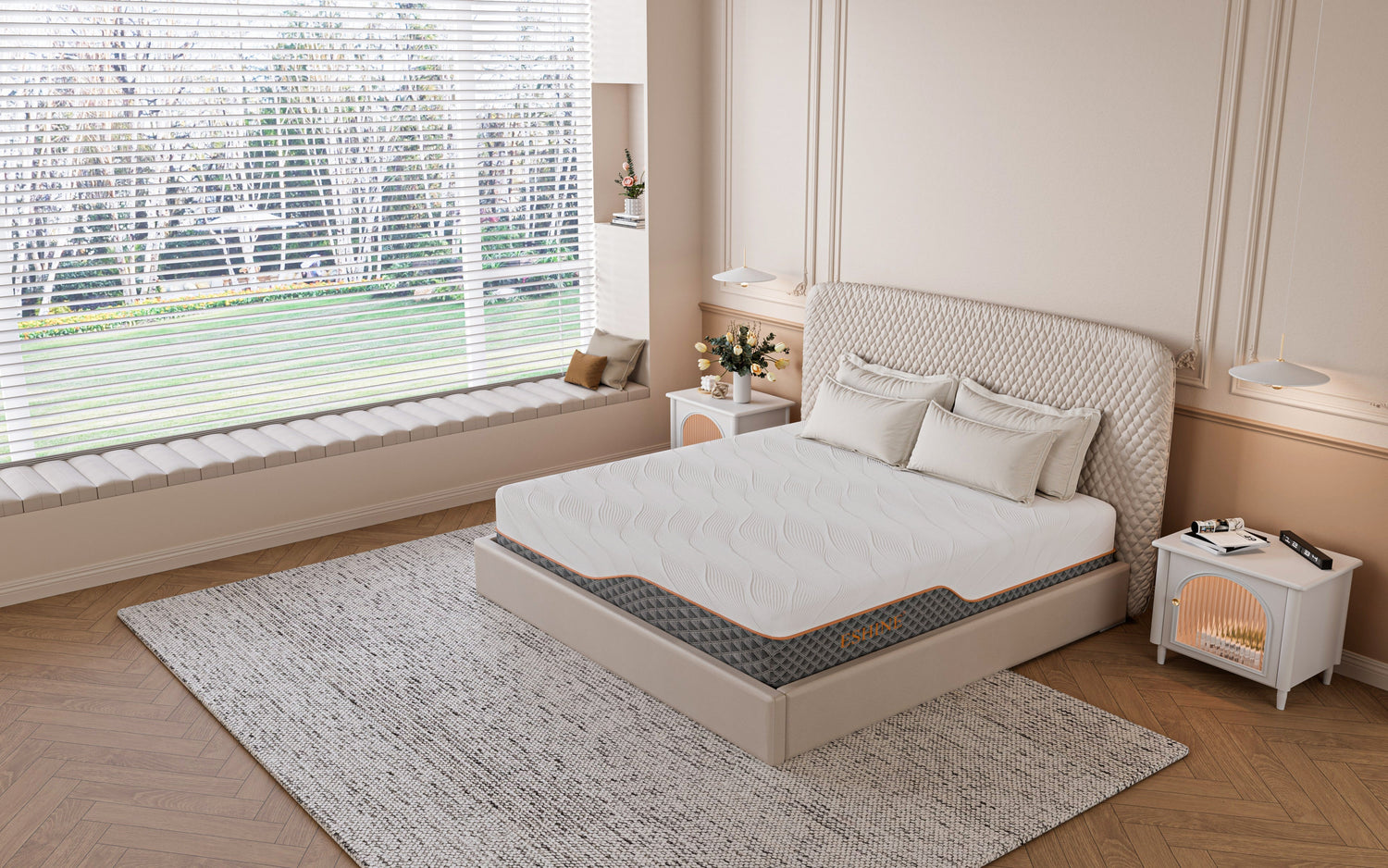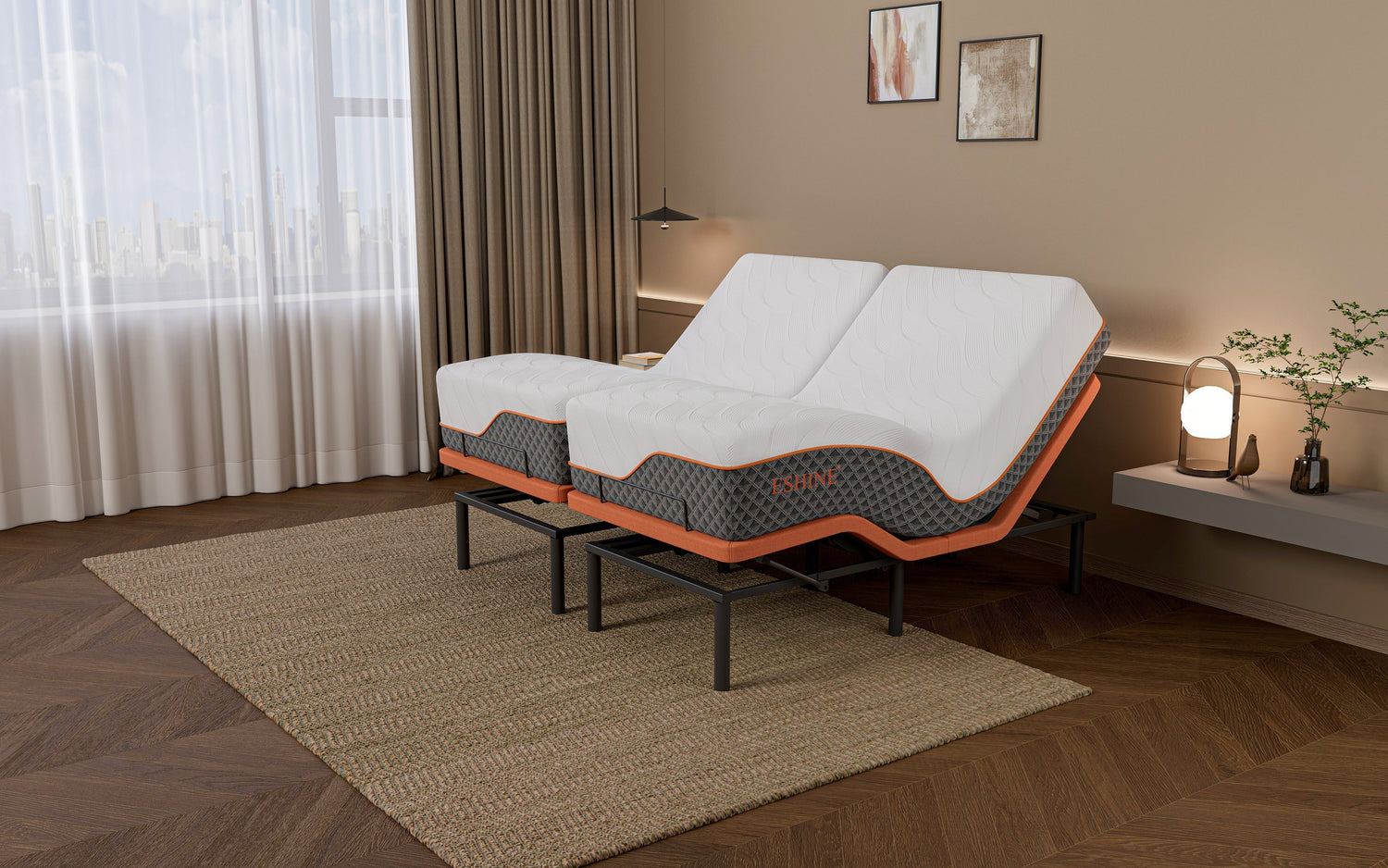When was the last time you bought a mattress? Five years ago? Ten? Or even longer? In the blink of an eye, our mobile phones have evolved from keypad feature phones to curved-screen smartphones, our TVs from bulky CRT "boxes" weighing dozens of pounds to foldable ultra-thin wall-mounted displays, and even the sofas in our homes now come with "one-touch adjustable backrests"—yet the mattress you spend 8 hours in close contact with every day may still be stuck in the outdated mindset of "as long as it’s lieable." In fact, sleep technology has undergone multiple rounds of iteration, and from material research to ergonomic design, there are key secrets hidden to help you "say goodbye to back and waist pain."
If your perception of mattresses is still trapped in the dichotomy of "hard mattresses cure back pain" or "spring mattresses are soft enough," or if you still have bad memories of waterbeds (once popular last century but abandoned due to "heat retention and leakage") and air mattresses (cumbersome to inflate and prone to deflation), then it’s time to completely update your knowledge. Step into a modern mattress store today, and you’ll find shelves filled with products labeled "gel memory foam," "individually pocketed coils," "zoned support," and "anti-mite & anti-bacterial." The sales staff’s jargon like "slow rebound coefficient" and "support force test" can leave you confused. Don’t panic—this guide will not only help you sort out these terms but also teach you to start from your own needs, avoid the trap of "excessive marketing" and find the "dream mattress" that truly fits your body.
Step 1: Mindset Shift – The Mattress World Has Changed Beyond Recognition, and Technology Lies in the Details
First, let go of your stereotypes about mattresses: The idea that "hard mattresses protect the waist" is actually a misconception (an overly hard mattress will leave your waist suspended, which instead increases muscle tension), and the belief that "spring mattresses are not durable" is also outdated (modern spring technology has solved the aging problem). More importantly, you need to understand that today’s mattresses are no longer "single-material" products but a combination of "support layer + comfort layer + protective layer"—and the key to changing all this started with NASA’s space experiments.
In the 1960s, to protect astronauts from the impact force of up to 12G (equivalent to 12 times their body weight) during spacecraft takeoff and re-entry into the atmosphere, NASA developed a type of "slow-rebound polyurethane foam." This material can deform slowly under pressure, evenly disperse impact force, and fit the body’s contours based on temperature. This was the prototype of memory foam. Initially, this material was only used in the aerospace field; it wasn’t until 1991 that an American company modified it for use in mattresses, marking the beginning of the "tech-enabled sleep" era.
However, early memory foam mattresses had obvious shortcomings: low density (mostly below 30D) led to insufficient support and easy sagging; the sealed foam structure lacked breathability, causing heat buildup and sweating on the back and hips after a night’s sleep. Today’s memory foam, though, has undergone multiple generations of upgrades:
· 1st-Generation Upgrade: Increased density (40-50D became the mainstream), improving support and durability by 3 times;
· 2nd-Generation Breakthrough: Infused with gel particles (divided into "gel beads" and "gel layers"), using the thermal conductivity of gel to accelerate heat dissipation and solve the heat retention problem;
· 3rd-Generation Innovation: Added "zoned design"—for example, adjusting memory foam density for the shoulder, waist, and hip areas (50D for shoulders, 55D for waist, 50D for hips) to provide precise support for different weight-bearing areas.
This is why modern memory foam mattresses can now meet both the needs of "body contouring" and "no heat retention or sagging." So, before shopping, remember: Your choice is never an "either/or" between springs and memory foam, but rather "which combination better fits your body." A good mattress should be like a "customized support pad"—it should hold your spine in a natural curve while ensuring no part of your body bears excessive pressure. Modern memory foam mattresses are precisely the representatives of this "proactive adaptation to the human body."
Step 2: In-Depth Exploration – Understand Your Mattress Options, as Different Materials Fit Different Needs
Before visiting a physical store or browsing online products, clarify the "core differences" between mainstream mattresses today to avoid being misled by sales staff’s "professional jargon." We divide mattresses on the market into two major categories and break them down for you from three dimensions: "support principle," "suitable groups," and "pros and cons."
1. Traditional Innerspring Mattresses: Ideal for Those Who Prefer "Clear Support"
The core of an innerspring mattress is its "support layer," and the key to the support layer lies in the type of springs—different springs determine the mattress’s support, noise level, and durability:
· Continuous Coil Springs: All springs are connected in a single wire mesh. Their advantages include strong support and low price, making them suitable for people weighing over 75kg (150lbs) who prefer "firm support." However, they have a drawback: "moving one part affects the whole"—you’ll feel obvious shaking when your partner turns over. Additionally, springs tend to deform after long-term use, leading to "sagging and squeaking."
· Individually Pocketed Coils: Each spring is individually wrapped in a fabric pouch and operates independently. Their advantages are excellent noise reduction (no squeaking when turning over) and the ability to fit the body’s contours (different springs bear pressure based on body parts), making them suitable for couples or light sleepers. The disadvantages are slightly weaker support compared to continuous coil springs and a higher price. Also, note that low-quality pocketed coils may have "fabric pouch tears," which affects service life.
Beyond the springs, the "comfort layer" of an innerspring mattress is also crucial—it directly determines the sleeping feel:
· If the comfort layer is "latex + wool": Latex offers good elasticity, while wool absorbs moisture and retains warmth.
· If the comfort layer is "polyester cotton + foam": It has a low price but poor breathability, leading to heat buildup during long-term use. It’s suitable for budget-conscious users or short-term scenarios (e.g., rental apartments).
· If the comfort layer is "memory foam + gel": This is a hybrid model of "springs + memory foam," combining the support of springs and the contouring of memory foam. It’s ideal for people who want to try memory foam but worry it will be "too soft."
However, note this critical flaw of innerspring mattresses: "long-term support degradation"—even high-quality pocketed coils will lose elasticity after 5-8 years of use, leading to "sagging areas" in the waist and hip regions. At this point, replacement is necessary; otherwise, it may cause back and waist pain.
2. Modern Memory Foam Mattresses: Ideal for Those Pursuing "Contouring and Comfort" (Represented by Eshinesleep)
The core of a memory foam mattress is its "slow-rebound material," but you may not know that not all memory foam is the same—density and whether functional ingredients are added are the keys to distinguishing quality:
· Density: Memory foam density is usually measured in "D." Below 30D is low density (too soft, insufficient support, prone to sagging); 35-50D is medium density (mainstream choice, balancing contouring and support); above 50D is high density (firmer, strong support, suitable for people weighing over 90kg (180lbs) or those with previous waist injuries). Eshinesleep’s memory foam mattresses mostly use 45D medium-density base material, with an additional 55D high-density zoned layer in the waist area—this design fits the contours of the shoulders and hips while keeping the waist from being suspended.
· Functionality: Ordinary memory foam tends to retain heat, but high-quality memory foam solves this problem through "gel infusion" and "ventilation hole design." For example, Eshinesleep infuses "micro gel beads" into the memory foam layer—these beads act like "small radiators" to absorb body heat and release it through the "honeycomb ventilation holes" on the mattress sides. Additionally, some models add a "silver-ion anti-bacterial layer," which inhibits mites and bacteria growth, making them suitable for people with allergies or families with children.
Also, pay attention to the "durability" of memory foam mattresses: High-quality memory foam should have a "rebound rate" of over 90% (quickly regains shape after being pressed) and show no obvious sagging after "80,000 pressure tests." Eshinesleep offers a 10-year warranty for its mattresses, with free replacement for quality issues in the first 3 years—this is a testament to its confidence in material quality.
 E5000+ Luxe Hybrid Ultra Cooling Medium-Firm Bundle
E5000+ Luxe Hybrid Ultra Cooling Medium-Firm Bundle

Step 3: The Critical "Test Lie" – 90% of People Do It Wrong! Here’s the Correct Method
"It’s common sense to test-lie on a mattress before buying," but many people make a decision after "sitting for 30 seconds and lying for 1 minute" in a store—only to experience back and waist pain after sleeping on it for a week. The reason is that the duration, posture, and evaluation criteria for a proper test lie all require attention.
3 Key Points for a Correct Test Lie
1. Duration: At Least 5-10 Minutes per Sleeping Posture
Your body needs time to "adapt" to the mattress: When you first lie down, the memory foam hasn’t started contouring, and the springs haven’t fully borne pressure. You can only feel the real support after 10 minutes. It’s recommended to try "back sleeping," "side sleeping," and "stomach sleeping" (if you’re used to it) in sequence, staying in each posture for 5-10 minutes.
1. Posture: Focus on 3 Key Body Areas
· Back Sleeping: Can you easily slide your hand under your waist? If not, the mattress is too hard, and your waist is suspended. If your hand moves freely, the mattress is too soft, and your waist lacks support. The ideal state is "your hand can fit under your waist with slight pressure"—this means your waist is properly supported.
· Side Sleeping: Is your spine kept horizontal? When side sleeping, if your shoulders or hips sag significantly, causing your spine to curve (e.g., shoulders lower than the waist), long-term use will lead to shoulder and neck pain. A good mattress allows your shoulders and hips to sag naturally while keeping your waist aligned with your spine.
· Stomach Sleeping: Do you feel pressure on your chest? When stomach sleeping, an overly hard mattress will press on your chest and abdomen, affecting breathing. An overly soft mattress will cause your waist to arch, increasing the burden on your lumbar spine. If you’re used to stomach sleeping, it’s recommended to choose a firmer memory foam or pocketed coil mattress.
1. Environment: Avoid "Distractions" in Stores
Store environments can distort your test-lie experience: For example, bright lights keep you mentally tense and unable to relax; the "hard wooden base" under store mattresses differs from the "spring bed frame" at home, which may make the mattress feel firmer during testing; sales staff’s "urging" also prevents you from focusing on your feelings. This is why "online purchase + sleep trial period" is more reliable—you can experience the real sleeping feel of the mattress in your own bedroom, wearing pajamas, under familiar lighting, and on your usual bed frame.
Step 4: "Perfect Mattress" Recommendations for Different Groups – Precise Matching of Needs
Beyond materials and test lies, you should also choose a mattress based on your age, weight, and health status. After all, the needs of the elderly differ from those of young people, and the fitting standards for people with previous waist injuries are not the same as those for healthy individuals.
1. The Elderly: Prioritize "Support + Breathability"
Elderly people usually prefer firmer mattresses and are prone to sweating. It’s recommended to choose a "high-density memory foam mattress" or an "individually pocketed coil mattress with a firm latex layer":
· High-density memory foam (above 50D) supports the elderly’s waists and prevents difficulty getting up due to an overly soft mattress;
· Individually pocketed coils offer good noise reduction, which is suitable for the elderly’s light sleep;
· The breathability of latex or gel layers reduces nighttime sweating in the elderly.
· Pitfall Warning: Avoid overly soft low-density memory foam or continuous coil mattresses. The former makes it hard for the elderly to turn over, while the latter’s noise may disrupt sleep.
2. Pregnant Women: Focus on "Waist Support + Side-Sleeping Comfort"
Pregnant women (especially in the second and third trimesters) face increased waist pressure and mostly sleep on their sides. It’s recommended to choose a "zoned support memory foam mattress":
· The high-density memory foam in the waist area supports the waist and reduces lumbar pressure;
· The medium-density memory foam in the shoulder and hip areas fits the body’s contours and avoids pressing the abdomen during side sleeping;
· The heat dissipation of the gel layer relieves pregnancy-related heat sensitivity.
3. Children: Emphasize "Safety + Growth Adaptability"
Children’s spines are still developing, so mattresses should be neither too hard nor too soft. It’s recommended to choose a "35D medium-density memory foam mattress with an anti-bacterial layer":
· Medium-density memory foam supports the natural development of the spine and prevents spinal curvature caused by overly soft mattresses;
· The silver-ion anti-bacterial layer prevents mite growth and protects children’s delicate skin;
· The mattress thickness is recommended to be 15-20cm (overly thick mattresses make it hard for children to get on and off the bed).
· Pitfall Warning: Do not let children sleep on adult high-density memory foam mattresses (too hard, affecting comfort) or overly soft foam mattresses (lack of support).
Final Note: Choosing a Mattress Is Not About "Buying the Expensive One" – It’s About "Buying the Right One"
From "hard mattresses" to "smart memory foam mattresses," humanity’s pursuit of quality sleep has never stopped—but no matter how technology advances, "suiting yourself" is always the core standard. If you’re buying a memory foam mattress for the first time, start with a basic model of "medium density + gel layer" and use.
If you sleep with a partner, prioritize a hybrid model of "individually pocketed coils + memory foam" for both support and noise reduction. If you have a previous waist injury, remember to choose "high-density zoned memory foam" to get precise support for your waist.
Sleep accounts for one-third of our lives. A good mattress lets you wake up energetic every morning instead of starting the day with back and waist pain. Now, start with doing your homework and choose a "perfect mattress" for yourself—may you enjoy a restful night’s sleep in comfortable support every night.




